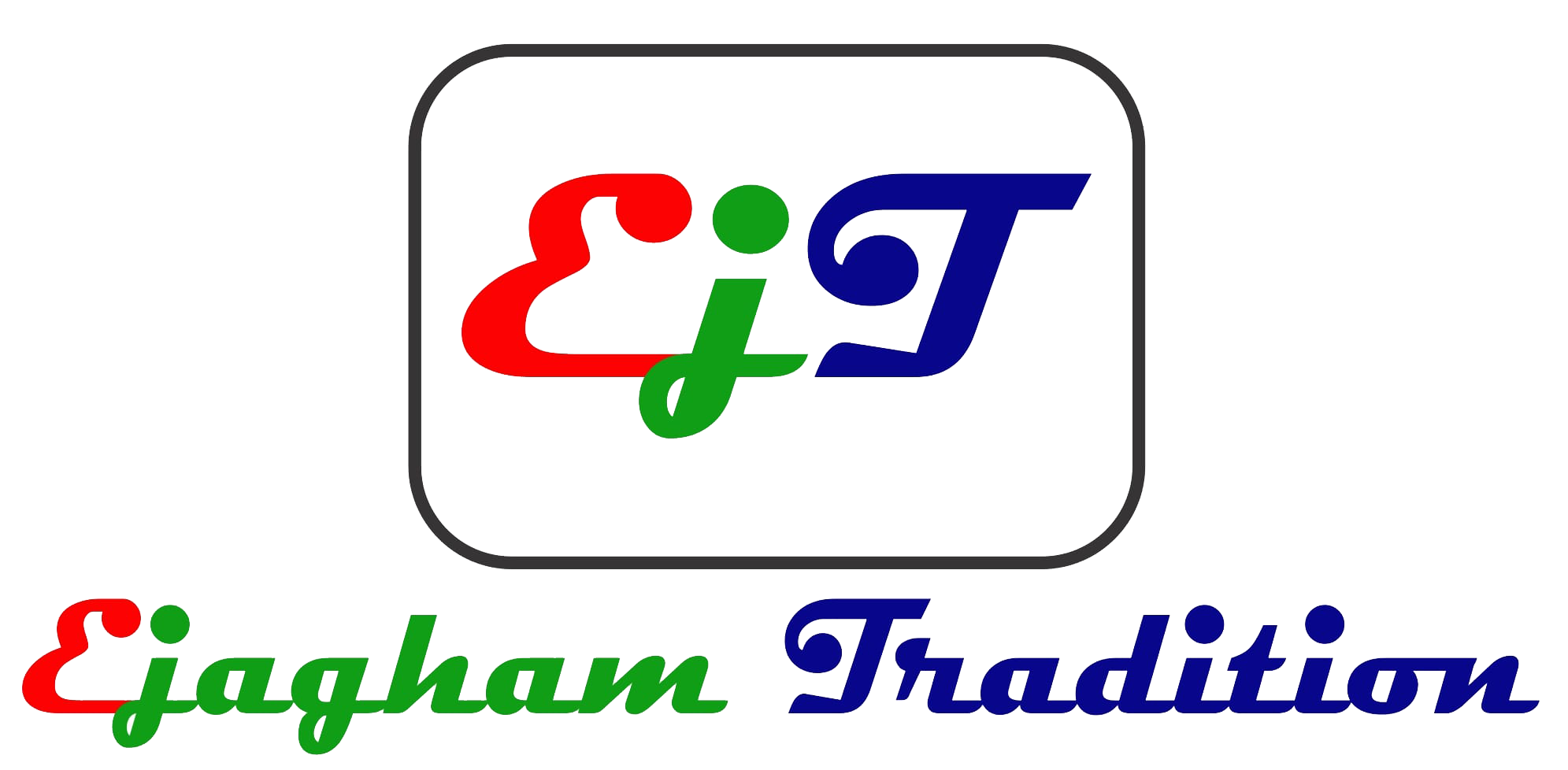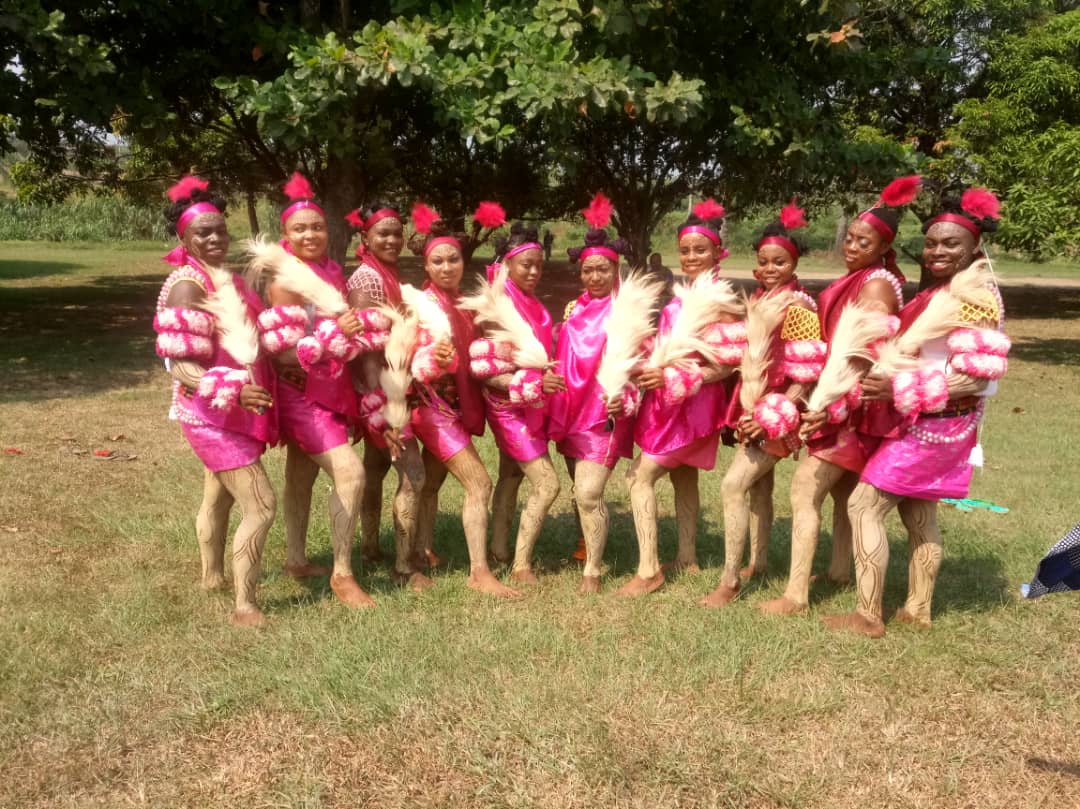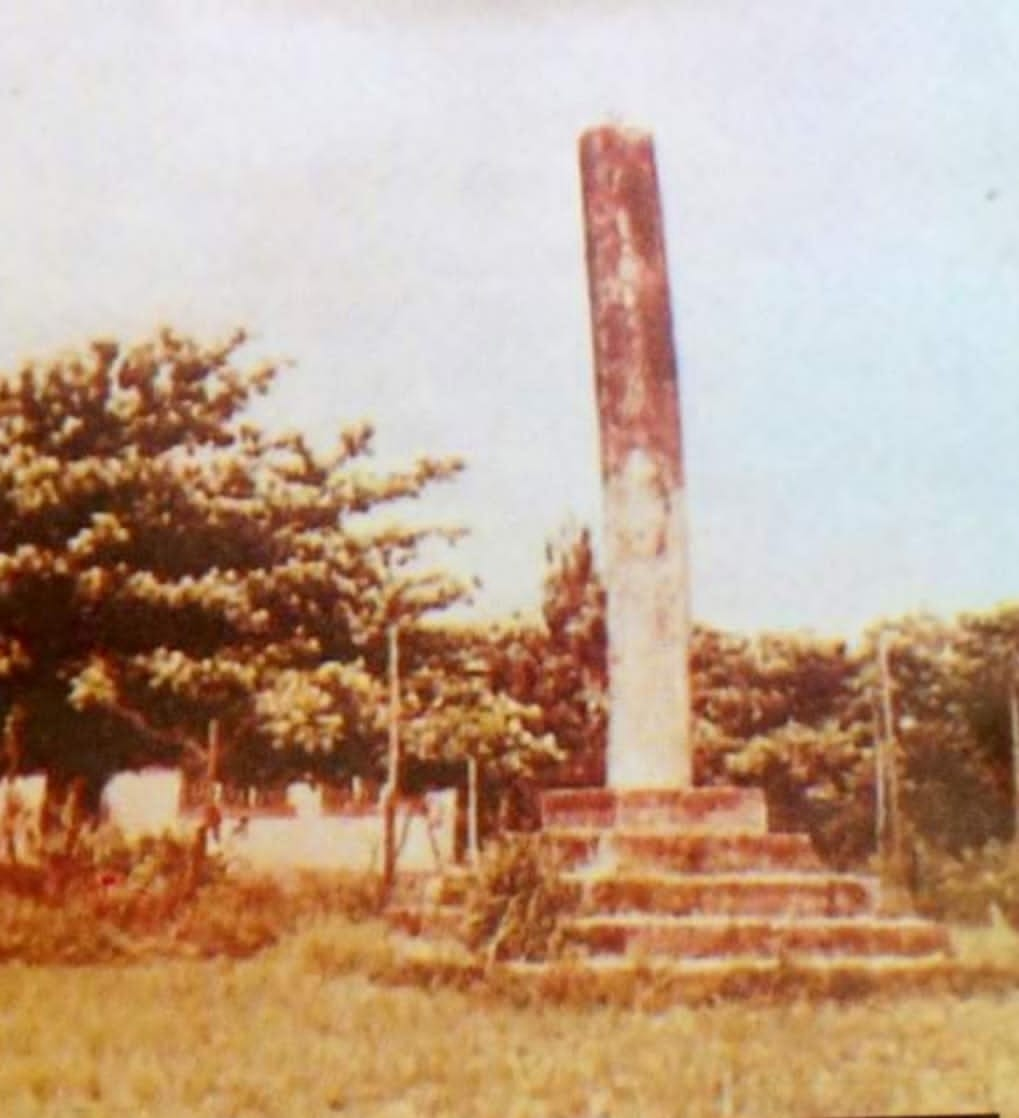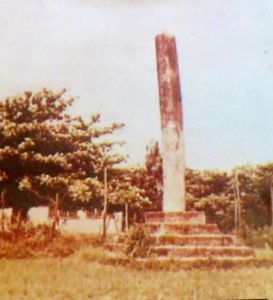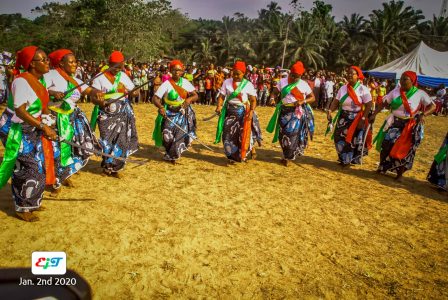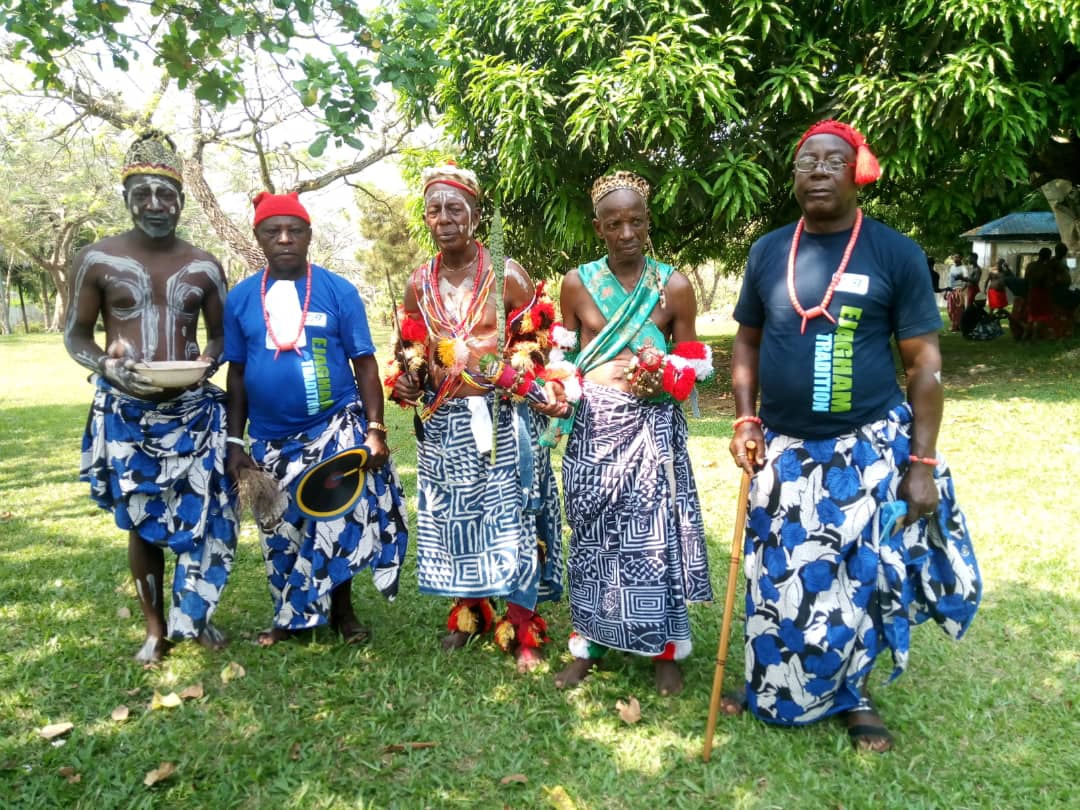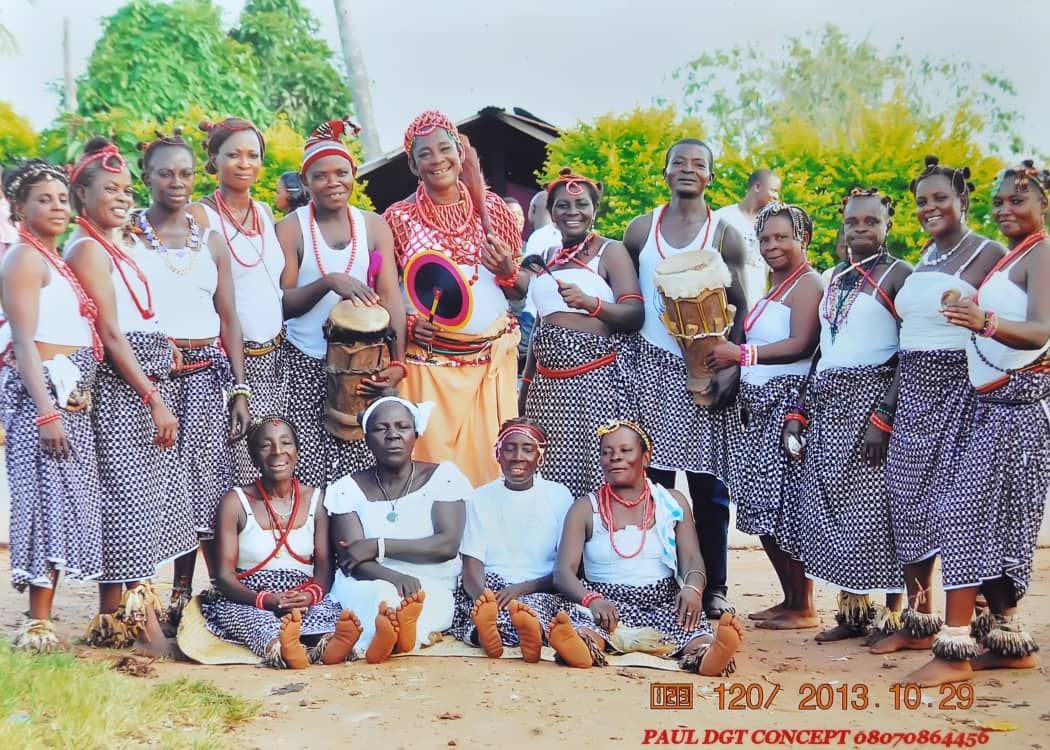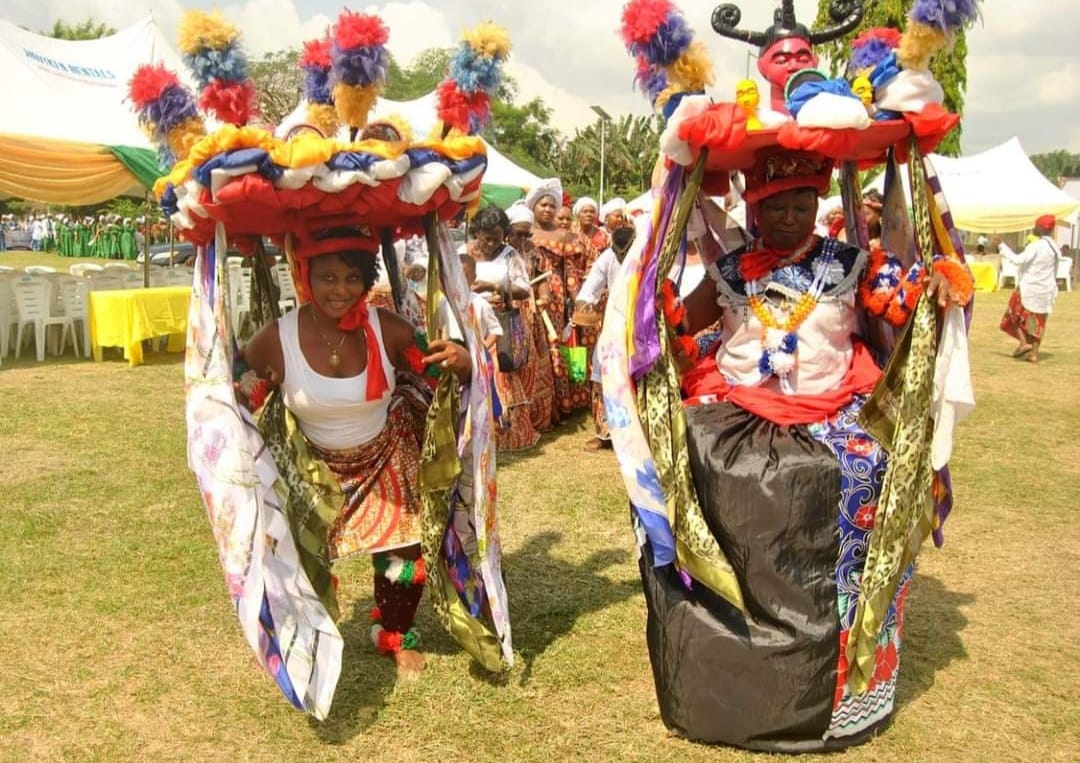Ejagham traditional music play a significant role in the expression of the culture, tradition and history of Ejagham people. It also provides some narratives to our way of life. There are several Ejagham traditional musical instruments that facilitate the making of Ejagham traditional music.
Musical instruments are mostly used for entertainment purposes and in doing so they complement Ejagham arts and culture. In Ejagham, some of these instruments could also be used as a means of communication in both entertainment and non-entertainment circumstances to both the living and our ancestors. For example, during entertainment some instruments could be used to communicate direct or coded messages such as change of dance steps, increase or reduction of dancing pace, change of direction, instructions to go further or retreat and even to end the show. Of course these messages are only understood by those who understand the language of the instruments.
Similarly, in non-entertainment situations some instruments could be used to communicate information directly to the immediate or neighbouring communities. This was prevalent and effective when communities were small and the environment was less noisy. It is also used in communication during rituals and spiritual performances.
Generally, traditional musical instruments have evolved. Some have been mordenised, modified and others made popular globally. As a result of technology, some of the sounds of traditional musical instruments have been digitalised. This innovation makes it possible to replicate the same sounds produced by these instruments and ensures that, in current situation where skilled players of these instruments are lacking, we still make and enjoy traditional music. The question is, where in the scheme of things, is Ejagham traditional musical instruments?
Ejagham is a large nation of clusters. The influences of the 21st century have impacted the type and style of music as well as the instruments used to make them in the different clusters. Hence, there are various types of musical instrument, some are unique to the clusters and others are common across the clusters. In fact, there are cases where there are variations of the same instrument. Below are some of the Ejagham traditional musical instruments.

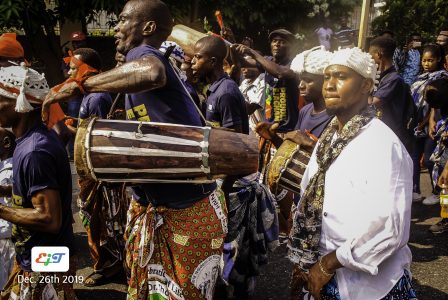
Okam: Okam is a skin covered Drum instrument widely used in Ejagham. The skin is stretched over one open end of a wooden carved barrel shaped shell. This makes it a Single-head drum. Okam is the heartbeat of Ejagham music. The types vary in size and functionality.
The ropes are tensioned by the use wooden wedges around the barrel. Stretching the ropes further stretch the skin to produce the desired sound when struck. The skin of animals mostly used for drumheads include: Nyep – Crocodile, Nsu – Red Deer, Otunghinjock – Elephants Ears, Nkem – Python skin, Ngungu – Antelope etc.
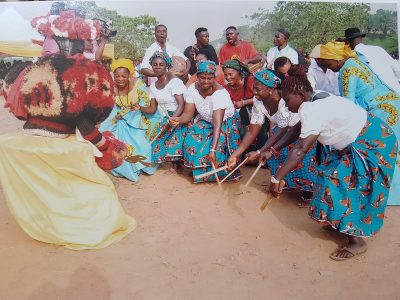
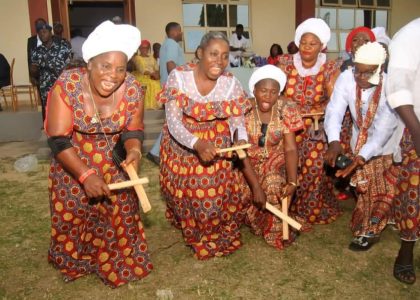
Ajak: Ajak is a Clapper type instrument. It is a basic form of percussion instrument which consist of two long Indian bamboo
Made out of dry Indian bamboos , split and shaped for the purpose of striking one against the other producing a kpak,kpak, kpakpa kpak sound. Mostly used in Bikundi, Ngumba , Ekpa , Nkup Abho anakae etc.
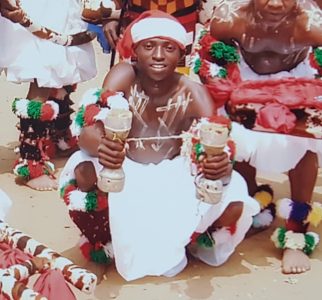
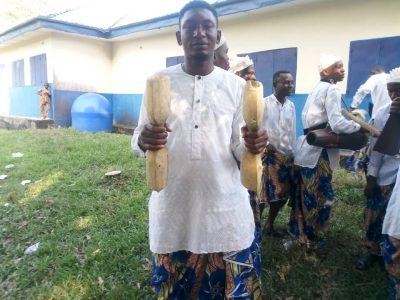
Morua: Morua is a Rattle type instrument used when performing chants, ballards etc. They are usually carved out of wood and could be decorated as desired.
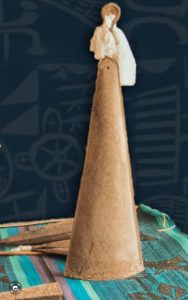

Ekifung: Ekifung is single Bell type instrument made from forged iron. It is usually gonged with a soft wooden bamboo stick.
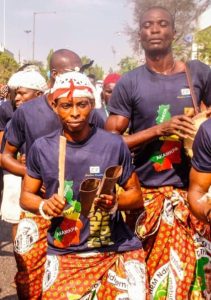
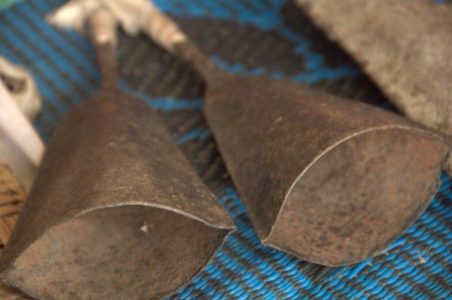
Okangkang: Okangkang is a double bell type instrument made from forged iron. It is usually gonged with a soft wooden bamboo stick. It is usually smaller that Ekifung.
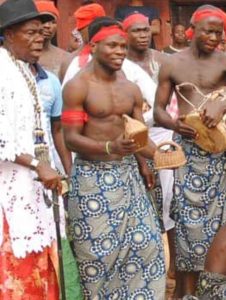
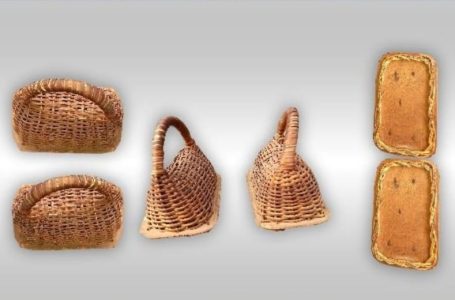
Akachak: Akachak is a primary Shaker type instrument. It is made out of calabash and cane rope skillfully woven to form a hand-held container. This container is then filled with dry seeds. The type of seed, quantity and size instrument determines the sound it produces.
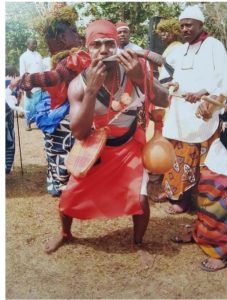
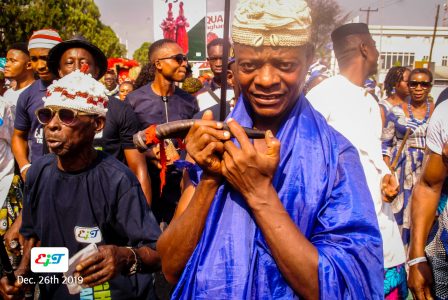
Ibang: Ibang is a Horn type instrument. An Ejagham horn instrument is made from from the horn of a giant antelope (Etonghayip ngungu). It is typically used to herald the appearance of a masquerade or dance group.
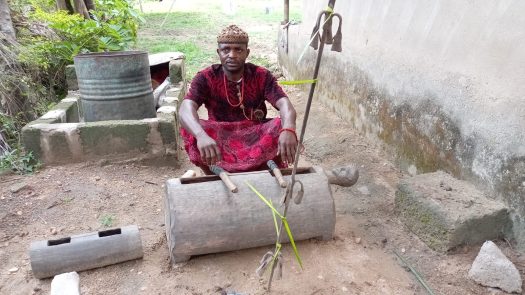
Eyuk: Eyuk is a Gong type instrument. It is made out of wood, dug out internally to form a cylindrical shell with apertures along the axis of the cylinder, to allow exit of air when struck with soft wooden sticks. Both ends of the cylinder are closed.
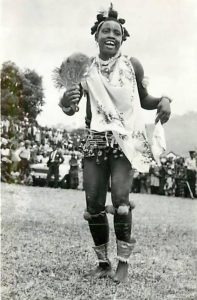
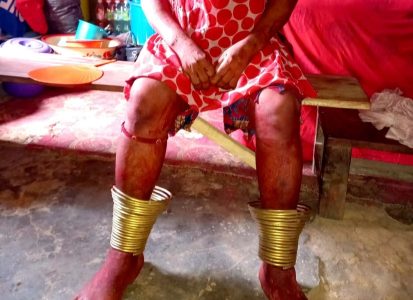
Agud: Agud is a secondary Shaker type instrument. They are worn on the ankles as shown and are activated by the performer. They are made from drawn bronze wire. It is worn by the performer until the performance grand finale.
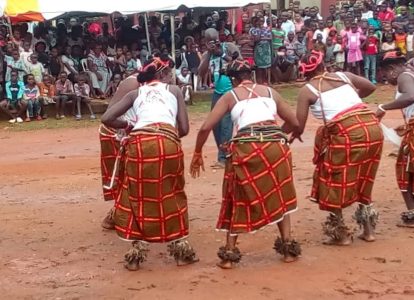
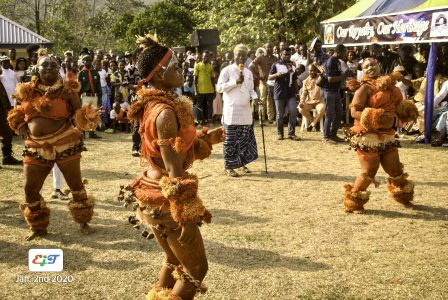
Nyiam: Nyiam is a secondary Shaker type instrument. Secondary shaker instruments are worn on various parts of the body such as wrists, ankles and waist and are activated by the performers. Nyiam are mad out of large Husk seeds. In Ejagham Nyiam are typically worn on ankles and waist by the performer.
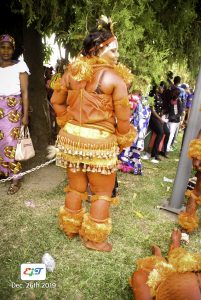
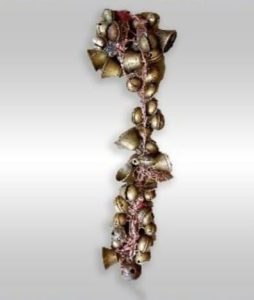
Ajore: Ajore is a secondary Shaker type instrument. Secondary shaker instruments are worn on various parts of the body such as wrists, ankles and waist and are activated by the performers. They are available in different variety, sizes and materials such as bronze bells etc. They can also be strapped onto performer’s regalia as required.
